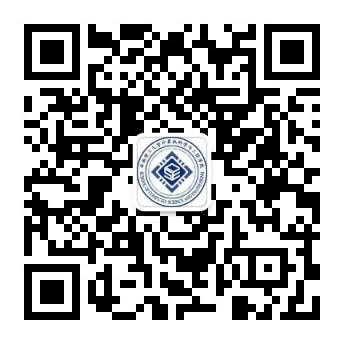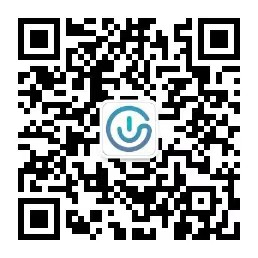课程代码 | 045101443 |
课程名称 | 计算机科学概论 |
英文名称 | An Introduction to Computer Science /Foundations of Computer Science |
课程类别 | 专业基础课 |
课程性质 | 必修 |
学时 | 总学时:16;实验学时:0;实习学时:0;其他学时:0 |
学分 | 1 |
开课学期 | 第1学期 |
开课单位 | 计算机科学与工程学院 |
适用专业 | 计算机科学与技术、计算机软件、网络工程、信息安全工程等全英班课程,非计算机专业的计算机基础全英班课程 |
授课语言 | 全英语 |
先修课程 | 高级专业英语、数学 |
课程对毕业要求的支撑 | (1) 培养学生熟练掌握专业英语,扎实掌握计算机科学的基本原理、方法和手段等方面的基础知识,为进一步学习后续的专业课程做好准备。 (2) 培养学生能够创造性地利用计算机科学基本原理解决现实生活遇到的相关问题。 (3) 能够针对计算机工程简单问题,开发、选择与使用恰当的技术、资源、现代工程工具和信息技术工具。 (4) 能够就计算机工程问题与全球业界同行及社会公众进行有效沟通和交流,包括撰写报告和设计文稿、陈述发言、清晰表达或回应指令。并具备良好的国际视野,能够在跨文化背景下进行沟通和交流。 |
课程目标 | 通过学习计算机科学概论这门入门课程,让学生对计算机科学技术有感性认识,使学生初步掌握计算机科学与技术的内涵(概念、定义、模型、方法、原理、工具等)与学科特点,了解学科的发展方向与行业应用,具备初步的计算机使用技能,为后续相关专业课程的深度学习奠定基础。 |
课程简介 | 教材用英-中双语写成,系统而又概要地介绍了计算机学科的定义、范畴、特点以及发展与变化的规律等。本课程的目的不是让学生学习大量具体的专业知识,而是针对所有对计算机感兴趣的学生进行入门性导引。全书由16章组成(绝大多数章节的内容都是学生们后续需要必修或者选修的一门单独的课程),分为6大部分:前言与绪论,数据表示与操作,计算机硬件,计算机软件,数据组织与抽象以及高级与前沿专题(比如,物联网、云计算,大数据等),涵盖了计算机科学各个领域(包括最新领域)的最新进展、所有的经典与丰富的前沿主题,以及跨学科、跨行业的应用,可以拓展读者的知识视野,能够帮助他们较全面地了解计算机科学的学科特点与发展现状,为今后深入学习计算机科学的各门专业课程打下基础。本书每一章末尾都包含本章小结,附有一定量的参考读物,包括部分最新的文献,以及一定量的练习,以帮助学生巩固已学的知识和课后进行深入的探讨。 |
教学内容与学时分配 | 第一单元导论 (15pp) (3hrs), 包含,通过经典的电影片段,比如,电影《简·爱》中的主人罗切斯特先生与简爱小姐关于人人平等的对话,《音乐之声》的主题曲“雪绒花”中蕴含的“爱我祖国”的情怀,片中上尉军官克里斯托弗·普卢默不背叛自己的祖国去给希特勒当汉奸的节操,对学生进行社会主义核心价值观(平等,爱国等)的教育,以及介绍中国在IT领域取得的巨大成就,比如,超级计算机,5G等等。 第二单元数制与转换 (14pp) (2hrs) 第三单元数据存储与压缩 (24pp) (3hrs) 第四单元数据操作(16pp) (2hr) 第五单元计算机组成(18pp) (3hr) 第六单元计算机网络(20pp) (3hr) 由于该课程只分配了16个讲授课时。这就决定了讲授内容只能是有选择性的,即只能讲授主要的章节,大量的内容没有时间去讲,这对任何一位授课教师都是挑战,同时,也为学生们提供了独立自学其他章节内容的机会。 |
实验教学(包括上机学时、实验学时、实践学时) | 无 |
教学方法 | 课堂教学、课外作业、线上线下答疑 |
考核方式 | 出勤与保持:15% 作业完成与课堂表现:15% 期末考试(闭卷):70% |
教材及参考书 | 教材: 邓辉舫等编著的最新教材:《计算机科学导论》(英中双语版),2016年, 人民邮电出版社 参考书目: 1)Foundations of Computer Science - From data manipulation to theory of computation by Forouzan B.A. Higher Education Press (2004), ISBN 978-7-04-015540-0 2) (美) Behrouz A. Forouzan著,刘艺等译, 《计算机科学导论》,机械工业出版社, 2004, ISBN 978-7-111-13159-2; 3)Foundations of Computer Science - From data manipulation to theory of computation by B.A. Forouzan, 3rd Edition (2013) 4)Computer Science Illuminated, N Dale and J. Lewis, 6th Ed, Jones & Bartlett Learning,2014 |
制定人及制定时间 | 邓辉舫,2019-04-13 |
“An Introduction to Computer Science” Syllabus
Course Code | 045101443 |
Course Title | An Introduction to Computer Science /Foundations of Computer Science |
Course Category | Specialty Basic Courses |
Course Nature | Compulsory Course |
Class Hours | 16 (Lecturing only) |
Credits | 1 |
Semester | 1st Semester |
Institute | School of Computer Science and Engineering |
Program Oriented | The course designed for all students who are interested in computer science |
Teaching Language | Full English |
Prerequisites | High-level domain English, Sound Math |
Student Outcomes (Special Training Ability) | (1) Ability to use domain English fluently, have solid knowledge on basic principles, methods and means of computer science, well-prepared for each follow-up domain course learning. (2) An ability to creatively use the basic principles of computer science to solve related problems encountered in real life. (3) An ability to develop, select and use appropriate technologies, resources, modern engineering tools and information technology tools for simple computer engineering problems. (4) An ability to communicate effectively on computer-related engineering topics with the engineering community and with society at large, such as being able to comprehend and write effective reports and design documentation, make effective presentations, give and receive clear instructions, and communicate in cross-cultural contexts with international perspectives. |
Course Objectives | The main purpose of this course is not to let students learn a large amount of specific domain knowledge, but to give an introductory guide to those who are interested in computing science, to help students master the basic concepts, definitions, models, principles, methodology, and tools of computer science, understand the trend of its development and its applications, acquire the preliminary skills of operating the computer and programming, and lay a foundation for learning other related courses in the future. |
Course Description | The textbook is written in full English with Chinese translations for all technical terms to help Chinese and foreign readers to understand the meaning of the contents precisely. It provides a systematic but brief introduction to computer science, including its definition, category, characteristic and developing status. The main purpose of this course is not to let students learn a large amount of specific domain knowledge, but to give an introductory guide to those who are interested in computing science. This book consists of 16 Units (most Units are stand-alone compulsory or optional courses in successive years of students further studies), divided into 6 parts: Preface and Introduction, Data representation and Operation; Computer Hardware;Computer Software;Data Organization and Abstraction;Advanced and Hot Topics (e.g., Internet of Things, Cloud Computing, and Big Data etc.). It is presented in English with Chinese translations of all technical terms embedded to help Chinese and foreign readers to understand the meaning of the contents precisely. It covers the latest advances in each field of computer science (including some hot fields) and all classic and plenty of the cutting-edge topics, as well as interdisciplinary and cross-sectors applications. This way, it can broaden readers’ horizons of knowledge, help them fully understand the characteristics and fellow the developing status of computer science, and lay a sound foundation for more advanced studies of computing science in the future. Enclosed with each chapter end are a Summary, a certain number of References and Recommended Readings (including some up-to-date ones), and a Practice Set to help readers better digest and consolidate what they learned, and encourage them to explore further after the lecture. |
Teaching Content and Class Hours Distribution | Unit 1 Introduction (15pp) (3hrs), including, education of socialist core values (equality, patriotism etc.) through showing clips of classic movies like “Jane Eyre”, and “Sound of Music”, as well as China great achievements in IT, say, supercomputers, 5G and so on) Unit 2 Number Systems and Conversions (14pp)(2hrs) Unit 3 Data Storage and Compression (24pp) (3hrs) Unit 4 Data Operations(16pp) (2hr) Unit 5 Computer Components (18pp) (3hr) Unit 6 Computer Networks(20pp)(3hr) As there are only 16 hours allocated for this course, only some selective key units can be delivered and most of units will be left to students for self-learning. |
Experimental Teaching | N/A |
Teaching Method | Lecturing; homework; Q & A online and offline |
Examination Method | Punctuality and stay-on (15%) Homework and class room behaviors/Manners & Conducts (15%) Final Exam (70%) |
Teaching Materials and Reference Books | Textbook: An Introduction to Computer Science by Huifang DENG et al , People’s Posts and Telecom Press(2016) References 1)Foundations of Computer Science - From data manipulation to theory of computation by Forouzan B.A. ,Higher Education Press (2004), ISBN 978-7-04-015540-0. 2)Foundations of Computer Science - From data manipulation to theory of computation by B.A. Forouzan, 3rd Edition (2013) 3)Computer Science Illuminated, N Dale and J. Lewis, 6th Ed, Jones & Bartlett Learning (2014) |
Prepared by Whom and When | Huifang DENG, 13 April 2019 |



